-
Sale!

BK112PF BearKat® BK1 Series Safety Glasses with Gray Lens MAX6® Anti-Fog Coating Soft Non-Slip Temple Material
Original price was: $3.25.$2.99Current price is: $2.99.- Lightweight frames (25 grams) are comfortable and easy to wear
- Non-Slip soft temple material
- Passes ANSI Z87.1 anti-fog test
- Premium MAX6® Anti-Fog Lens Coating
- Rugged polycarbonate lens filters 99.9% of harmful U.V. rays
- Single lens design with integral side shields for unobstructed view
- Strong yet lightweight design
- Meets ANSI/ISEA Z87.1 2020 standard
- Meets ANSI Z87.1 2020 standards
- Formerly known as Crews® Safety Glasses
4000 in stock (can be backordered)
-
Sale!
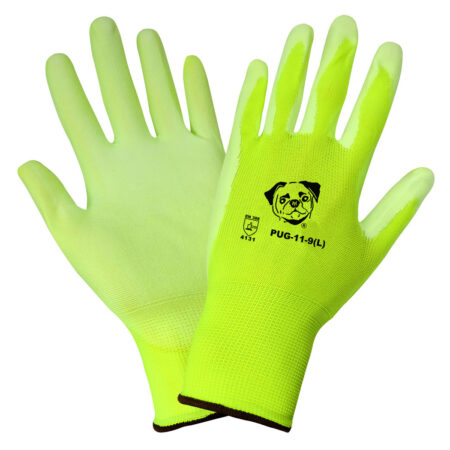
( Sold By Dozen ) A4 PUG™ High-Visibility Polyurethane Coated Nylon Gloves with Cut, Abrasion, and Puncture Resistance – PUG-11
Original price was: $66.00.$63.00Current price is: $63.00.Select options This product has multiple variants. The options may be chosen on the product pageMore Information Brand PUG™ Sizes 6(XS)-11(2XL) Industry Automotive Assembly, Computer Assembly, Electronic Assembly, Quality Control, General Assembly, Inspection Abrasion Level 4 ASTM F2992-15 Results 203 Grams Coating Polyurethane Coating Color White Coating Type Palm Cuff Knit Wrist Cut Level A1 EN 388 Levels 4131X Finish Smooth Gauge 13-Gauge High-Visibility Yes Puncture Level 2 Puncture Results 38 Newtons Shell Nylon Shell Color High-Visibility Yellow/Green Style Palm Coated Gloves -
Sale!
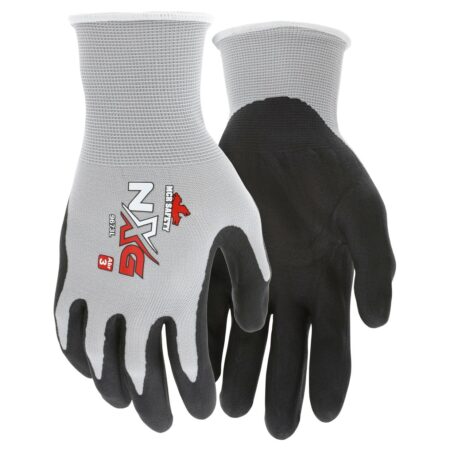
9673 ( SOLD BY DOZEN )MCR Safety NXG® Work Gloves 13 Gauge Gray Nylon Black Nitrile Foam Coated Palm and Fingertips
Original price was: $24.24.$23.88Current price is: $23.88.Select options This product has multiple variants. The options may be chosen on the product page- Sold by Dozen
- 13 Gauge Gray Nylon Shell
- Black Nitrile Foam Palm and Fingers
- Cool and Comfortable
- Easy to wear
- Knit Wrist
- Formerly known as Memphis Glove™
-
Sale!
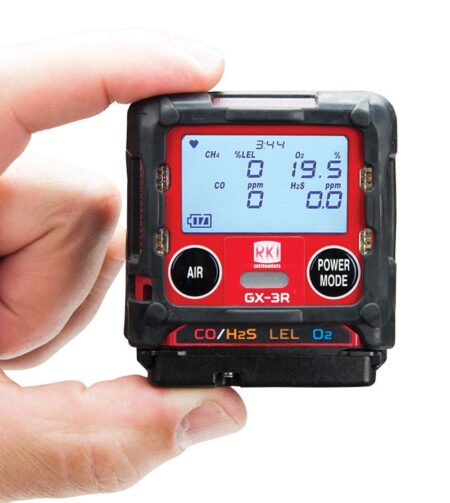
GX-3R Confined Space 4 Gas Monitor
Original price was: $595.00.$575.44Current price is: $575.44.OSHA defines the breathing zone as a ten inch radius around the worker’s nose and mouth, and requires that worker exposure monitoring air samples be collected in the breathing zone. Air sampling filters may be attached to the collar or lapel. Traditionally this means only a single gas monitor would be small enough for a worker to practically wear a gas monitor ‘In the breathing zone’. Now there is a 4 gas monitor smaller than many single gas monitors.
The GX-3R is the worlds smallest 4 gas monitor weighing only 3.52 ounces and can comfortably be clipped within a worker’s breathing zone (2.2” W x 2.55” H x 1.02” D). It simultaneously monitors and displays LEL combustibles, O2, CO (Hydrogen compensated CO also available), and H2S.
The GX-3R represents the latest evolution of gas detection technology utilizing a new generation of micro sensors. The LEL sensor has a unique design with two active filaments in one sensor to increase it’s resistance to silicone poisoning. If one filament gets poisoned the second filament takes over. The new O2 sensor is electrochemical with a 3 to 5 year life span. H2S and CO are now available in a combo micro sensor.
Safety supervisors will appreciate the non-compliance indicator. The instrument flashes it’s 3 LED lights every 30 seconds in the following conditions; if the instrument has not been bump tested, or if calibration is due, or if there was a gas alarm event. The 3 LED lights will continue to flash once every 30 seconds until the non-compliance condition has been resolved. The 30 second interval is adjustable.
24 in stock
-
Sale!
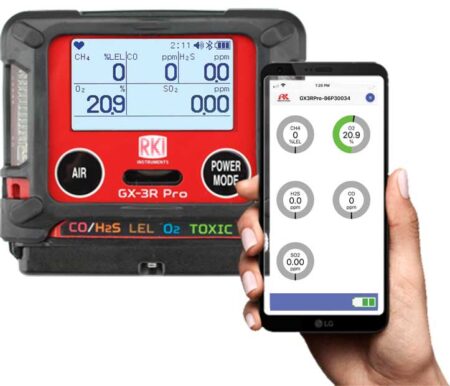
GX-3R Pro Gas Detector with Wireless Communication
Original price was: $1,160.00.$1,090.44Current price is: $1,090.44.Confined Space 5 Gas Monitor
Features
- Smallest & lightest detector
2.9″ W x 2.6″ H x 1.06″ D , 4.58 ounces - Detect up to 5 gases simultaneously
– Confined Space: LEL, O2, H2S, CO
– Toxics/IR Sensors: HCN, NH3, NO2, PH3, SO2, and CO2
– H2 Compensated CO sensor available - Simple 2-button operation
- Bluetooth communication with iOS & Android App
- Non-Compliance Indicator
- 3 user adjustable alarm levels
- Panic Alarm
- Man Down Alarm
- Impact resistant body
- Large full dot, auto-backlit display with auto-rotation
- Stealth mode for law enforcement
- Field replaceable sensors & filters
- Water and dust resistant design, IP66/68
- 3 Year Warranty*
25 in stock
- Smallest & lightest detector
-
Sale!
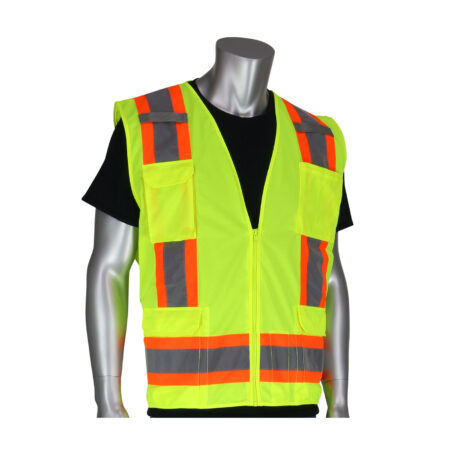
302-0500Y ANSI Type R Class 2 Two-Tone Eleven Pocket Surveyors Vest with Solid Front and Mesh Back
Original price was: $15.24.$14.89Current price is: $14.89.Select options This product has multiple variants. The options may be chosen on the product pageProduct Description
Ideal for construction, municipalities, shipyards, and anywhere hi-visibility apparel is necessary.
FEATURES
- Solid front and mesh back for breathability
- 2″ two-tone tape for optimum visibility
- Zipper closure
- 2 mic tabs with reinforced stitching
- 2 lower external flap pockets
- 2 internal lower pocket
- 1 chest radio pocket
- 1 chest pocket with 4 pen pockets in front
-
Sale!
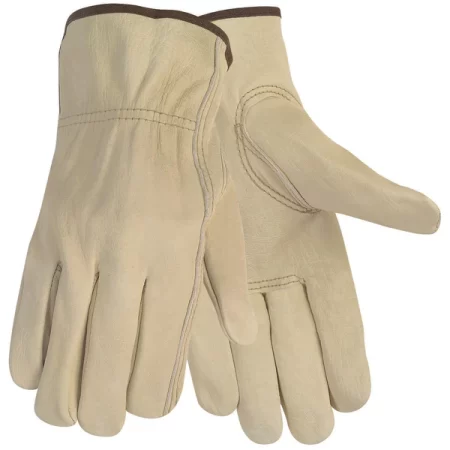
3215 Premium Leather Driver Glove( Sold By Dozen )
$4.79 – $5.24Select options This product has multiple variants. The options may be chosen on the product pageFrom wranglin’ to buildin’, these gloves are tough for the job! Cowhide is the most commonly used leather due to availability. Characteristics include a good balance between abrasion resistance, dexterity, durability and comfort. The 3215 drivers gloves feature; unlined CV Grade cow grain leather, shirred elastic back, cotton hemmed, and a keystone thumb pattern.
-
Sale!

30-1000 ( SOLD BY DOZEN )Superdex Premium Foam Nitrile Palm Dip Glove
Original price was: $37.04.$35.34Current price is: $35.34. Select options This product has multiple variants. The options may be chosen on the product page -
Sale!
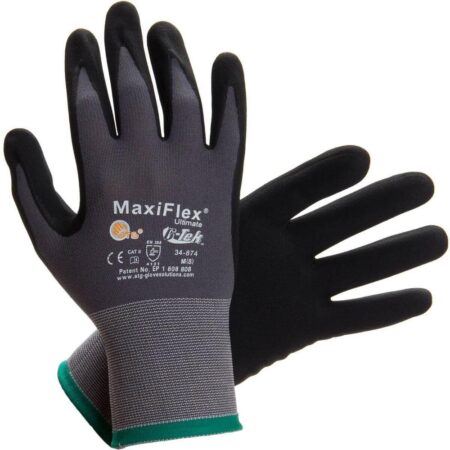
34-874 SOLD BY DOZEN MaxiFlex® Ultimate™
$47.67 – $54.44Select options This product has multiple variants. The options may be chosen on the product pageProduct Description
Designed and developed as a breathable glove, MaxiFlex® Ultimate™ has become the benchmark for precision handling in dry environments.
FEATURES
- MicroFoam Nitrile coatings are compatible with light oils and will provide a good grip and excellent abrasion resistance
- Knit Wrist helps prevent dirt and debris from entering the glove
- Touchscreen compatible to allow the user to operate a touch screen phone or device without removing gloves
- 360° Breathability – Patented micro-foam nitrile coating offers 360° breathability, making it the most breathable glove on the market today
- 25% Thinner – Than most foam nitrile gloves on the market while offering twice the mechanical performance
- Form, Fit and Feel – Mimics the “hand at rest”, reducing hand fatigue and increasing comfort
- Latest Knitting Technology – Utilized to produce smooth and rounded fingertips, improving fingertip sensitivity
- Consistent Liner Penetration – From the nitrile, leaving only the soft liner resting against the skin
- Optimized Grip – The micro-cup finish allows for a controlled grip
- Silicone and Latex free
- Complies with FDA food handling requirements 21 CFR, Part 177
- All ingredients used in the manufacturing and construction of this product are compliant with the REACH legislation
- This glove has been laundered prior to final packaging making it clean and safe for use
- The Oeko-Tex® Association has evaluated and certified this product as skin safe from the second it comes into contact with the skin
- The Skin Health Alliance has awarded professional dermatological accreditation following review of the scientific dossier behind this product
- This style available tri-folded and shrink-wrapped for carefree dispensing through vending machines (34-874V)
- This style is also available pair tagged with triangle eyelet for easy showroom display (34-874T)
-
Sale!

FT300 SOLD BY DOZEN
$2.19 – $2.39Select options This product has multiple variants. The options may be chosen on the product pageMCR Safety NXG® Work Gloves
10-Gauge Gray Cotton/Polyester Shell
Blue Latex Palm and Fingers -
Sale!

35-7465 Cut-Less Watchdog® Glove with Foam Nitrile Palm Coating Black SOLD BY DOZEN
Original price was: $86.44.$82.80Current price is: $82.80.Select options This product has multiple variants. The options may be chosen on the product pageDescription
Cut-Less Watchdog® Glove with Foam Nitrile Palm Coating Black
- Extreme cut resistance
- Seamless 18-gauge knit glove with KorPlex®cut resistant technology
- Premium breathable foam nitrile palm coating
- Reinforced thumb crotch
- Touch screen capable
- ANSI puncture level 3
- EN Cut Level C
- ANSI Cut Level A4
-
Sale!
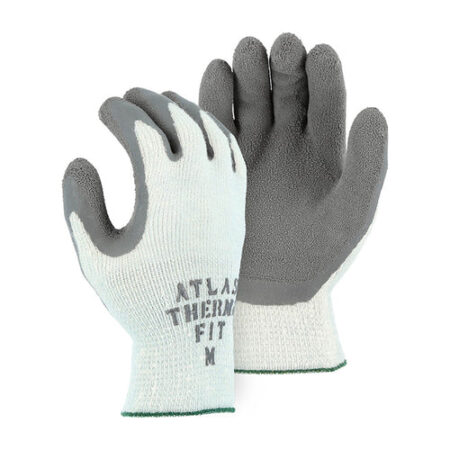
3388 Winter Lined Atlas® Rubber Coated Wrinkled Palm Coated Glove on Thermal Liner Gray ( SOLDBY DOZEN )
Original price was: $49.44.$47.79Current price is: $47.79.Select options This product has multiple variants. The options may be chosen on the product pageDescription
3388Winter Lined Atlas® Rubber Coated Wrinkled Palm Coated Glove on Thermal Liner
- All-purpose Work Glove for Applications requiring comfort and versatility
- Blue Crinkle latex Palm coating for increased grip in wet or dry Applications
- Medium-weight Gray cotton/Polyester Seamless Knit shell
- Excellent wear, resistance, and flexibility
- Long Knit Cuff for more secure fit and increased protection
- Pre-curved finger design to minimize hand fatigue
- Available sizes: S-XL

